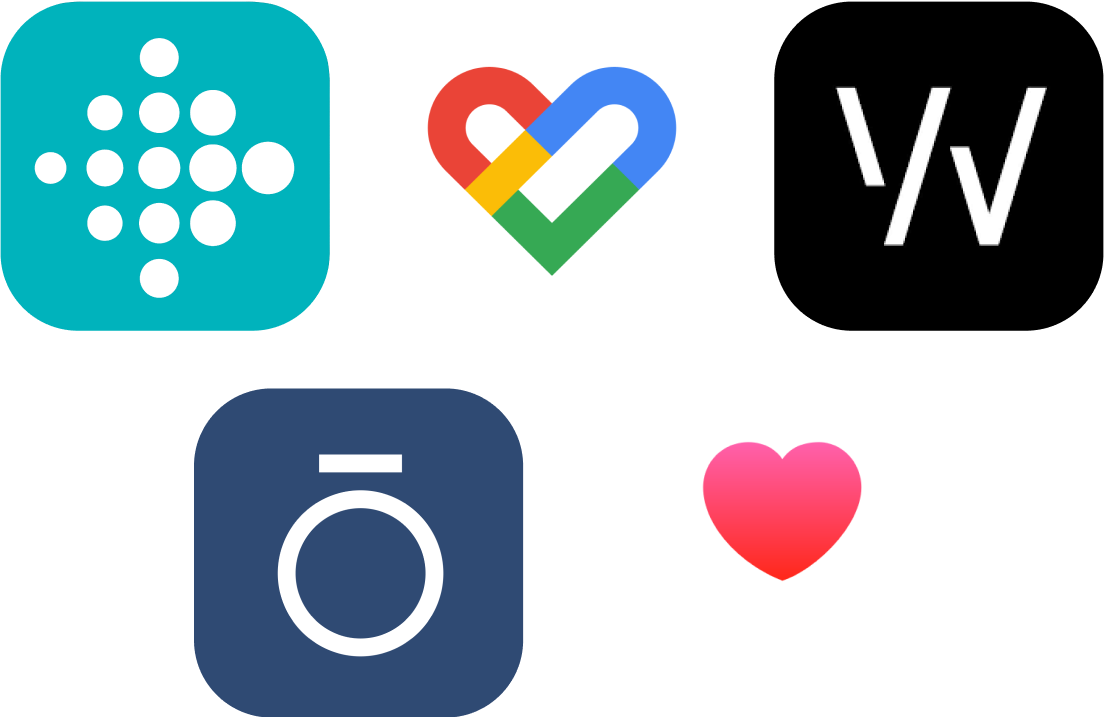Health & Wellness
Sauna and Cold Plunge Routine: Unlock Health, Recovery, and Longevity
5 min read


Download Awesome Health Club App to track, manage, and optimize your daily sugar intake!


Are you curious about how much sugar is okay to eat in a day? Well, you've come to the right place. In this article, we'll dive into the world of sugar, exploring how to calculate your daily sugar intake and provide you with some awesome tools and tips to keep your sugar consumption in check. So, let's sweeten our knowledge and find out how to enjoy sugar in moderation!
Before we jump into the nitty-gritty, let's introduce you to a fantastic tool – the Sugar Intake Calculator. This tool helps you figure out how much sugar you can enjoy each day without overdoing it. All you need to do is plug in a few details like your age, gender, and activity level, and voilà! The calculator will give you a personalized recommendation for your daily sugar limit. It's like having your own sugar superhero looking out for you!
Calculating your daily sugar intake isn't as hard as you might think. It's all about understanding your body's needs. Your age, gender, and activity level play a big role in determining how much sugar your body can handle. The Sugar Intake Calculator uses these factors to estimate the amount of sugar that won't lead to a sugar rush. Your gender and age, along with activity level determine the amount of calories you should be consuming in a day. Once the number of calories has been determined, we calculate 10% of that calorie intake, and then divide by 4 to convert the sugar you can consume into grams!
Sedentary - Your lifestyle includes light physical activity in your day-to-day life.
Moderately Active - Your lifestyle includes activity equivalent to walking 1.5 to 3 miles per day at 3 to 4 miles per hour.
Active - Your lifestyle includes the equivalent of walking more than 3 miles per day at 3 to 4 miles per hour.

When it comes to making informed dietary choices, understanding nutritional information is key, especially when it comes to sugar. Whether you're tracking your sugar intake or simply aiming for a balanced diet, knowing where to find this information is crucial. Here's a brief guide to help you locate nutritional details about sugar in foods and beverages.
Now that you've got your personal sugar goal, let's dig deeper into what it means. The general recommendation for daily sugar intake is less than 25 grams for kids, 36 grams for men and 25 grams for women. But keep in mind, these are just guidelines. Your individual needs might be a bit different, and that's where the Sugar Intake Calculator shines!
Hidden within seemingly innocent meals and snacks are hidden sources of sugar that can sneakily contribute to our daily intake. Let's uncover some of the top foods that are surprisingly high in sugar and learn to be more mindful of our choices.



Perhaps the most notorious culprits are sugary beverages like sodas, sports drinks, energy drinks, and even some fruit juices. These drinks can contain a shocking amount of sugar, often exceeding the recommended daily limit in a single serving. It's not just the regular sodas – even those "healthy" fruit juices can pack a sugary punch that's worth watching out for. If you’re looking for a low sugar, yet delicious and nutritious drink that you can have instead, try protein coffee.

Starting your day with a bowl of cereal might seem innocent, but take a closer look at the nutrition label. Many breakfast cereals, even those marketed as "whole grain" or "nutritious," can be loaded with added sugars. Always opt for cereals with lower sugar content and if you’d like natural sweetness, then you can pair them with fresh fruits.





Yogurt, often perceived as a healthy snack, can hide a sugary secret. Flavored yogurts, particularly those with fruit at the bottom or colorful swirls, can contain high levels of added sugars. Instead, opt for plain Greek yogurt and add your own fresh fruits or a drizzle of honey for sweetness.

Condiments and sauces are often overlooked sources of hidden sugars. Ketchup, barbecue sauce, and even seemingly innocent salad dressings can contribute significant amounts of sugar to your meals. Check labels or consider making your own versions using natural ingredients.





Granola bars might appear to be a quick and healthy snack, but many commercial options are loaded with sugars. They're often held together by syrups and sweeteners, making them more like a candy bar in disguise. Look for bars with lower sugar content or explore recipes to make your own at home.

Pastries, cookies, and other baked goods are well-known for their sweet profiles, but their sugar content can be staggering. Commercially produced baked goods often contain high levels of added sugars, making them more of an occasional treat than a regular indulgence.





Ice creams, frozen yogurts, and other frozen desserts can be a delightful treat on a hot day, but they can also be packed with sugars. Always check the labels and consider choosing treats that use natural sweeteners or are labeled as low-sugar alternatives.

Fruit is generally healthy, but canned fruits can pose a sugar-related challenge. Many canned fruits are preserved in sugary syrups, adding unnecessary sugar content. When possible, opt for fresh or frozen fruits without added sugars.





While smoothies can be a nutritious way to consume fruits and vegetables, they can also turn into sugar bombs if not crafted mindfully. Adding multiple fruits, fruit juices, and sweeteners can quickly escalate the sugar content. Focus on using whole fruits, vegetables, and a source of protein for a balanced blend.

Snack time can lead us astray, especially with packaged snacks like flavored chips, crackers, and even some trail mixes. Always read labels to assess the sugar content, and consider healthier alternatives like whole nuts, seeds, and fresh fruits.Navigating the world of hidden sugars can be a challenge, but with a bit of label reading and a commitment to making informed choices, you can keep your sugar intake in check. Remember, it's not about completely avoiding sugar but rather being mindful of where it's coming from and enjoying it in moderation. Your taste buds and your health will thank you!


Both corn syrup and high-fructose corn syrup (HFCS) contain a significant amount of sugar. Corn syrup is a liquid sweetener made from cornstarch, and high-fructose corn syrup is a type of corn syrup that has undergone further processing to increase its fructose content. Here are some other ingredients to watch out for!
You might have heard the saying, "Too much of a good thing." Well, that applies to sugar too. Consuming 50 grams of sugar a day might not seem like a lot, but over time, it can lead to health issues such as obesity, type 2 diabetes, and heart disease. While some sugars are naturally found in foods like fruits, it's essential to be mindful of added sugars in processed foods and beverages. Balancing your diet with nutrient-rich foods and keeping added sugar intake in check is crucial for maintaining optimal health.
Reducing your sugar intake might sound tough, but with some simple tricks, you can definitely do it! First, start by swapping sugary snacks with healthier options like fruits or nuts. Second, be a label detective – check those nutrition labels to spot hidden added sugar, and choose products with lower sugar content. Third, limit sugary drinks and opt for herbal tea, or water, flavored with a slice of lemon or cucumber. Lastly, watch those condiments like ketchup, salad dressings and sauces - they contain hidden sugars and will add up to your sugar intake very quickly. And finally, be patient with yourself. Small changes over time can lead to big, lasting results.
Horem ipsum dolor sit amet, consectetur adipiscing elit. Etiam eu turpis molestie, dictum est a, mattis tellus. Sed dignissim, metus nec fringilla accumsan, risus sem sollicitudin lacus, ut interdum tellus elit sed risus. Maecenas eget condimentum velit, sit amet feugiat lectus. Class aptent taciti sociosqu ad litora torquent per conubia nostra, per inceptos himenaeos. Praesent auctor purus luctus enim egestas, ac scelerisque ante pulvinar. Donec ut rhoncus ex. Suspendisse ac rhoncus nisl, eu tempor urna. Curabitur vel bibendum lorem. Morbi convallis convallis diam sit amet lacinia. Aliquam in elementum tellus.
Horem ipsum dolor sit amet, consectetur adipiscing elit. Etiam eu turpis molestie, dictum est a, mattis tellus. Sed dignissim, metus nec fringilla accumsan, risus sem sollicitudin lacus, ut interdum tellus elit sed risus. Maecenas eget condimentum velit, sit amet feugiat lectus. Class aptent taciti sociosqu ad litora torquent per conubia nostra, per inceptos himenaeos. Praesent auctor purus luctus enim egestas, ac scelerisque ante pulvinar. Donec ut rhoncus ex. Suspendisse ac rhoncus nisl, eu tempor urna. Curabitur vel bibendum lorem. Morbi convallis convallis diam sit amet lacinia. Aliquam in elementum tellus.
Horem ipsum dolor sit amet, consectetur adipiscing elit. Etiam eu turpis molestie, dictum est a, mattis tellus. Sed dignissim, metus nec fringilla accumsan, risus sem sollicitudin lacus, ut interdum tellus elit sed risus. Maecenas eget condimentum velit, sit amet feugiat lectus. Class aptent taciti sociosqu ad litora torquent per conubia nostra, per inceptos himenaeos. Praesent auctor purus luctus enim egestas, ac scelerisque ante pulvinar. Donec ut rhoncus ex. Suspendisse ac rhoncus nisl, eu tempor urna. Curabitur vel bibendum lorem. Morbi convallis convallis diam sit amet lacinia. Aliquam in elementum tellus.
Horem ipsum dolor sit amet, consectetur adipiscing elit. Etiam eu turpis molestie, dictum est a, mattis tellus. Sed dignissim, metus nec fringilla accumsan, risus sem sollicitudin lacus, ut interdum tellus elit sed risus. Maecenas eget condimentum velit, sit amet feugiat lectus. Class aptent taciti sociosqu ad litora torquent per conubia nostra, per inceptos himenaeos. Praesent auctor purus luctus enim egestas, ac scelerisque ante pulvinar. Donec ut rhoncus ex. Suspendisse ac rhoncus nisl, eu tempor urna. Curabitur vel bibendum lorem. Morbi convallis convallis diam sit amet lacinia. Aliquam in elementum tellus.
Horem ipsum dolor sit amet, consectetur adipiscing elit. Etiam eu turpis molestie, dictum est a, mattis tellus. Sed dignissim, metus nec fringilla accumsan, risus sem sollicitudin lacus, ut interdum tellus elit sed risus. Maecenas eget condimentum velit, sit amet feugiat lectus. Class aptent taciti sociosqu ad litora torquent per conubia nostra, per inceptos himenaeos. Praesent auctor purus luctus enim egestas, ac scelerisque ante pulvinar. Donec ut rhoncus ex. Suspendisse ac rhoncus nisl, eu tempor urna. Curabitur vel bibendum lorem. Morbi convallis convallis diam sit amet lacinia. Aliquam in elementum tellus.
Horem ipsum dolor sit amet, consectetur adipiscing elit. Etiam eu turpis molestie, dictum est a, mattis tellus. Sed dignissim, metus nec fringilla accumsan, risus sem sollicitudin lacus, ut interdum tellus elit sed risus. Maecenas eget condimentum velit, sit amet feugiat lectus. Class aptent taciti sociosqu ad litora torquent per conubia nostra, per inceptos himenaeos. Praesent auctor purus luctus enim egestas, ac scelerisque ante pulvinar. Donec ut rhoncus ex. Suspendisse ac rhoncus nisl, eu tempor urna. Curabitur vel bibendum lorem. Morbi convallis convallis diam sit amet lacinia. Aliquam in elementum tellus.
Horem ipsum dolor sit amet, consectetur adipiscing elit. Etiam eu turpis molestie, dictum est a, mattis tellus. Sed dignissim, metus nec fringilla accumsan, risus sem sollicitudin lacus, ut interdum tellus elit sed risus. Maecenas eget condimentum velit, sit amet feugiat lectus. Class aptent taciti sociosqu ad litora torquent per conubia nostra, per inceptos himenaeos. Praesent auctor purus luctus enim egestas, ac scelerisque ante pulvinar. Donec ut rhoncus ex. Suspendisse ac rhoncus nisl, eu tempor urna. Curabitur vel bibendum lorem. Morbi convallis convallis diam sit amet lacinia. Aliquam in elementum tellus.